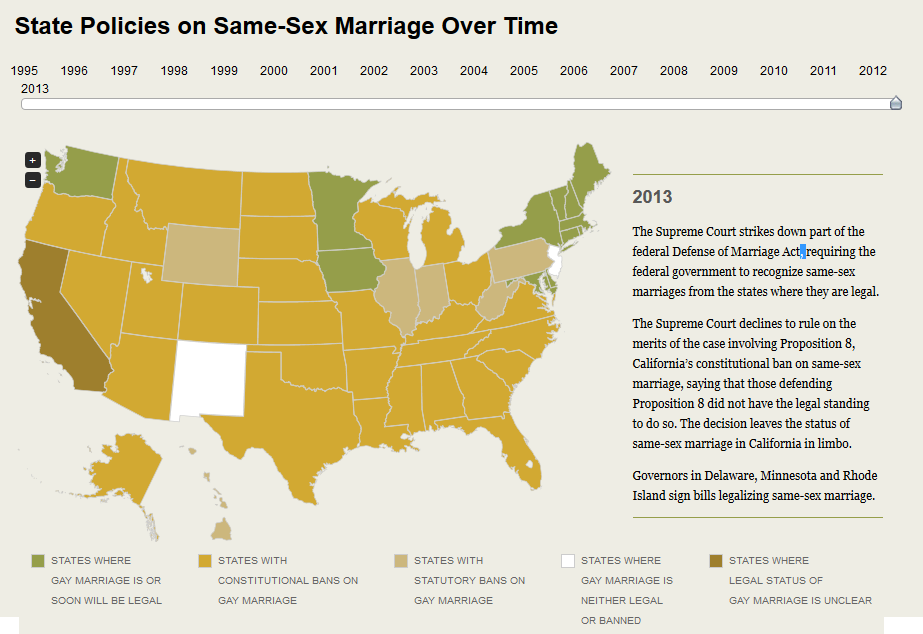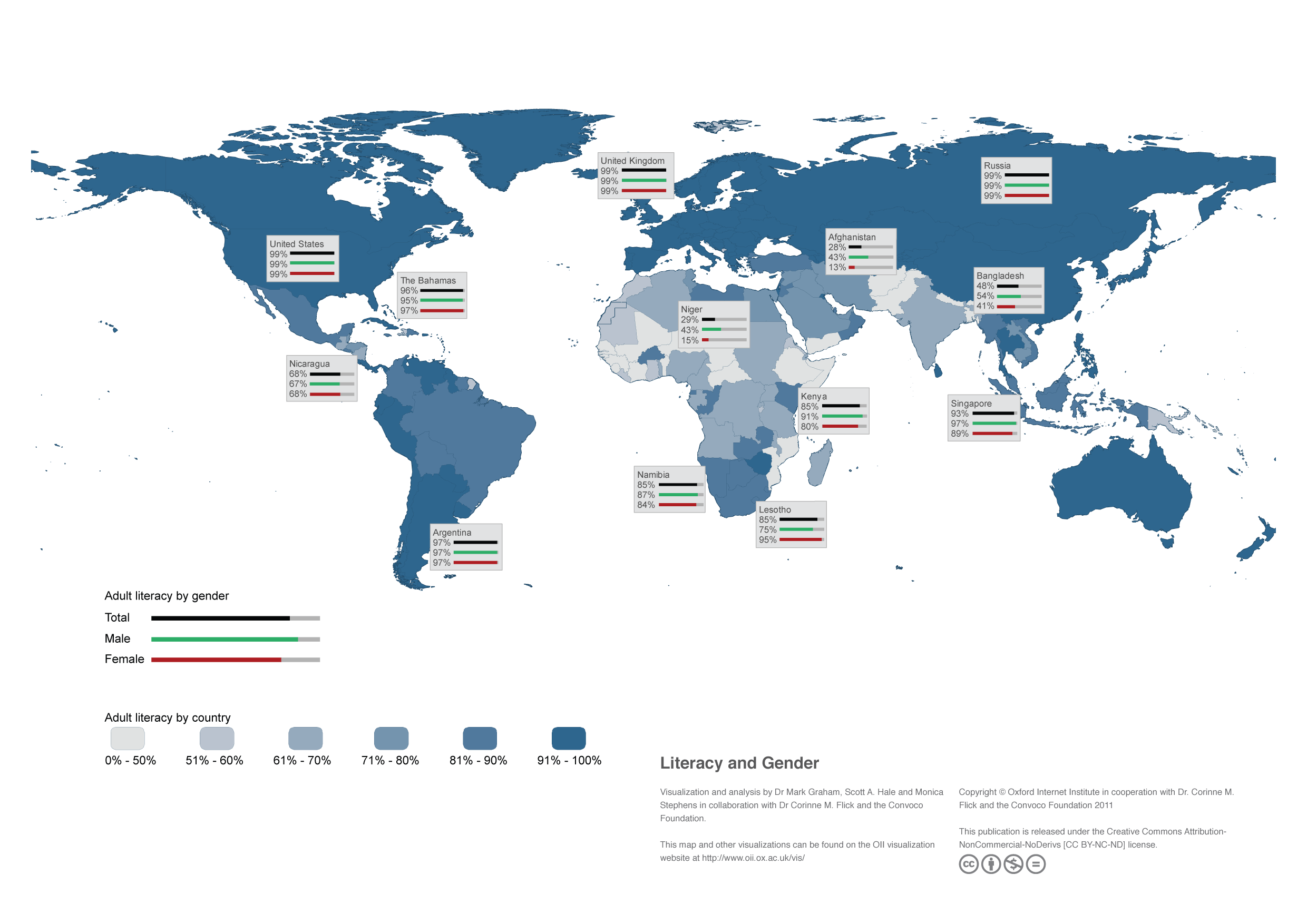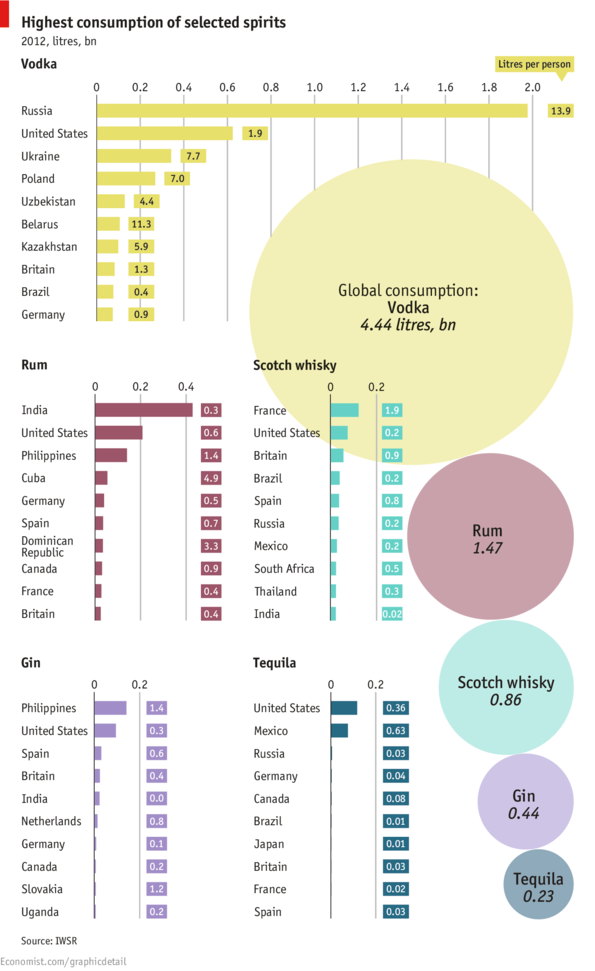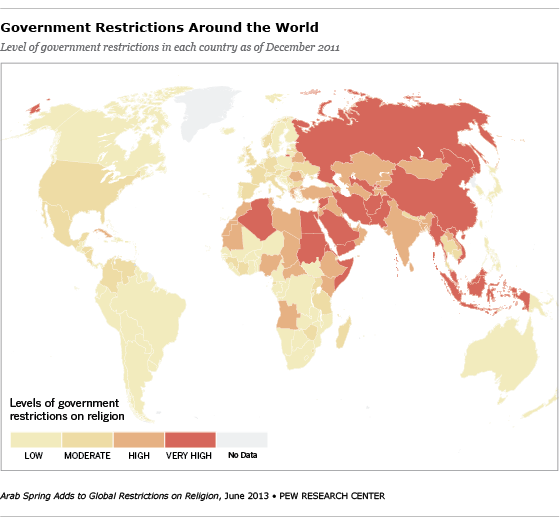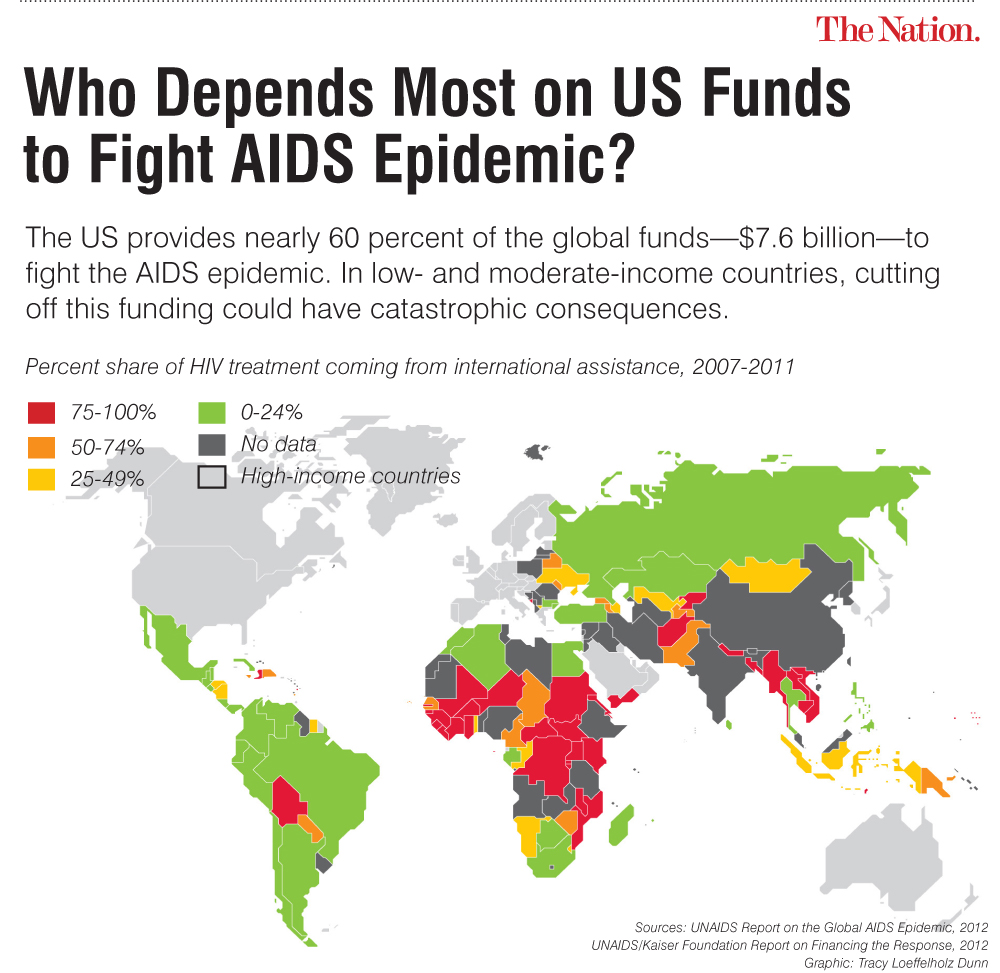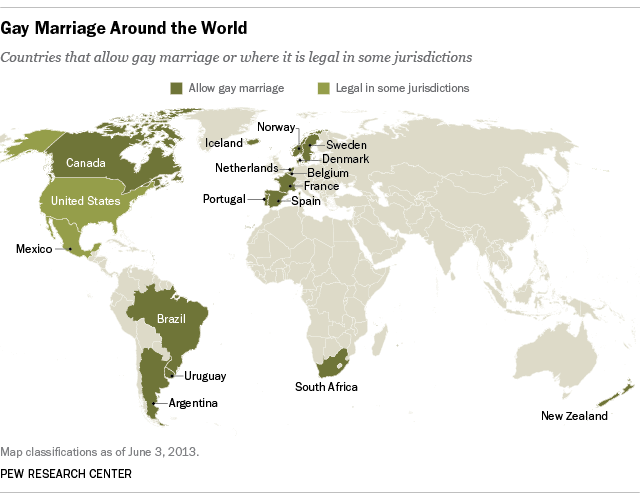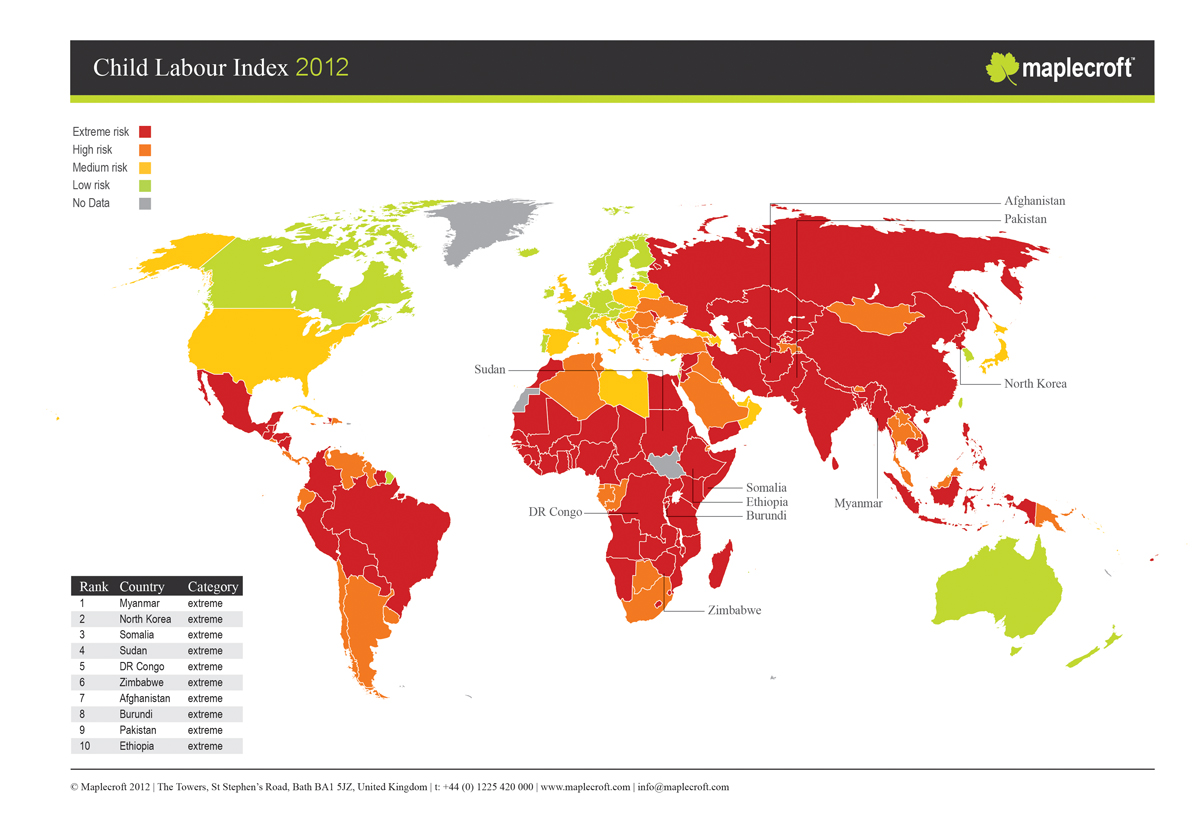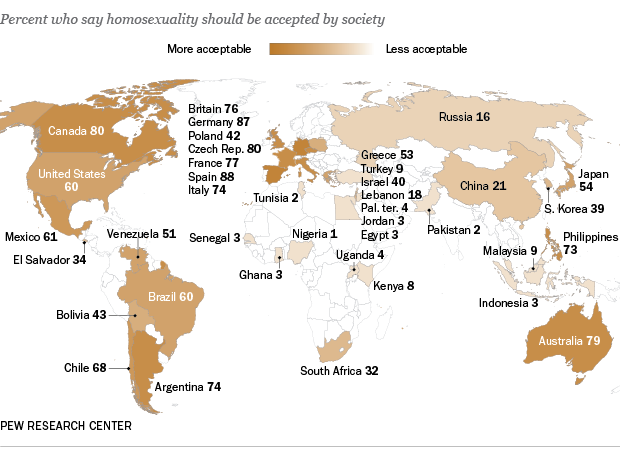 In light of the recent Supreme Court’s Defense of Marriage Act (DOMA) ruling in favor of same-sex marriage, we found this interesting visualization showing the global great divide among nations regarding the acceptance of homosexuality.
In light of the recent Supreme Court’s Defense of Marriage Act (DOMA) ruling in favor of same-sex marriage, we found this interesting visualization showing the global great divide among nations regarding the acceptance of homosexuality.
Countries where homosexuality is accepted include Spain (88%), Germany (87%), Czech Republic (80%) Canada (80%), Australia (79%), Philippines (73%), Argentina (74%), Italy (74%), Chile (68%), among others.
On the other side of the spectrum, there are countries where homosexuality is less acceptable, or not acceptable at all. Those countries include Nigeria (1%), Pakistan (2%), Tunisia (2%), Ghana (3%), Egypt (3%), Jordan (3%), Indonesia (3%), and Senegal (3%) to name a few.
Source: Pew Research Center: Global Acceptance of Homosexuality
